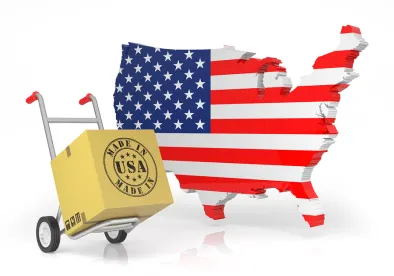This year, I’m starting us off by addressing corporate compliance and litigation issues that manufacturers will face in 2021.
COVID-19 / Force Majeure
We can’t talk about 2021 without mentioning COVID-19. In the commercial world, the phrase “force majeure” became the rage last year in manufacturing law as scores of companies attempted to suspend their performance under contracts. We counseled a number of companies (particularly in the aerospace supply chain) on both sides of the fence, but as I anticipated, there has not been a lot of litigation outside of what you hear about in the commercial real estate space. If you look at the history of force majeure over the past 100 years, you will not find a lot of reported cases between industrial companies. I think that is because at its core, suppliers, vendors, etc. need each other and, like most things, the temporary suspension passes.
Supply Chain Optimization
Force majeure and supply chain optimization often go hand in hand. A number of manufacturers got a really close look at their suppliers last year, and some of them did not like what they saw. There has been a lot of talk about re-shoring supply chains and/or moving them out of places like China. There has been some movement there, but not as much as it might be reported in the media. Ultimately, what I expect is that manufacturers will continue to diversify their supply chains and also evaluate their contractual arrangements. From a legal standpoint, we have always done a lot of work on the sales side, wherein we develop playbooks and/or trainings for manufacturers so they can mitigate any legal risks. Over the past few years, we have been asked to help out even more on the procurement side as that world has shifted somewhat from long, historic relationships in which there were no written contracts to more established relationships, especially amongst smaller companies. I expect that to continue in 2021.
The Biden Administration / Trade
I have an easy prediction that I know will come true. There will be no shortage of articles by commentators predicting what impact the Biden Administration will have on manufacturers. One area that bears watching is tariffs. The president-elect has already indicated that he is not going to make any sudden moves on tariffs when he comes into office. I will be watching the aerospace industry closely, as there was a lot of press in the past week after the U.S. placed tariffs on aerospace parts from the European Union in a long-running trade dispute over aircraft subsidies involving Boeing and Airbus. In addition to tariffs, a new administration always creates a new opportunity to assess whether the enforcement of various federal regulatory regimes will continue, including Conflict Minerals, anti-corruption (FCPA) and false claims. If you haven’t looked at your policies and/or training in a few years, now is the time to do so.
Foreign Direct Investment in the United States
In 2019, we saw a number of international clients invest in U.S. operations. While we expected this to continue in 2020, COVID-19 clearly made it more difficult as travel to the United States from abroad became next to impossible. I expect that as the vaccine is widely distributed, the activity will pick up again if business immigration also becomes easier. Typically, the first things advisors talk about with international companies are tax planning and corporate structures. While those are important, we always try to talk first about where a company’s customers are located and ways to integrate the U.S. operations so it is not a silo.
Strategic Growth / Exit from Manufacturing
Last month, I participated in a great program that covered a broad range of issues, including the various options for manufacturers that wish to access capital needed to grow, including debt and equity investments such as from family offices, private equity, and the like. We also covered considerations for owners looking to sell manufacturing businesses. There is no shortage of interest from both strategic and private equity buyers. The takeaways from the program can be found here. I expect the M&A activity to increase substantially in 2021, although I expect the activity to remain relatively modest in the commercial aerospace supply chain aside from some strategic consolidations and distressed deals.



 />i
/>i

